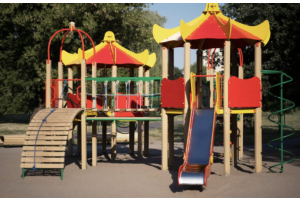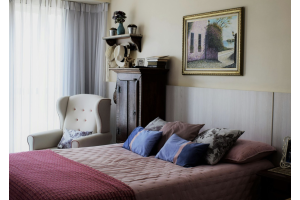Family-Friendly Home Design: Creating Spaces for Everyone

Designing your home in St. Petersburg, FL, in a way that caters to all family members, is essential for creating a harmonious living environment. With the right approach, you can create spaces that meet the needs of both adults and children. This article will guide you through various aspects of family-friendly home design, ensuring your home is comfortable, functional, and enjoyable for everyone.
Kid-Friendly Zones
Designating specific areas for children’s play and study is crucial in a family-friendly home. These zones should be safe, durable, and stimulating for kids. Opt for sturdy tables, chairs, and storage units that can handle the wear and tear of daily activities.
Safety is essential when designing kid-friendly zones. Ensure that furniture has rounded edges to prevent injuries, and use non-toxic materials for paint and finishes. Anchor heavy furniture to the wall to prevent tipping, and cover electrical outlets to protect curious little fingers.
Storage solutions are essential for keeping play and study areas organized. Use bins, shelves, and cubbies to store toys, books, and school supplies. Labeling these storage units can help children learn to organize their belongings and make cleanup easier.
Bathrooms for All Ages
Designing bathrooms that cater to both children and adults can be challenging but rewarding. For safety, install non-slip mats in the tub and shower, and use child-proof locks on cabinets that contain hazardous items. Consider adding a step stool so children can easily reach sinks and counters.
Efficient use of space and storage is also crucial in bathrooms. Use shelves, baskets, and hooks to keep toiletries and towels organized. Labeling storage areas can help children learn to put things away properly. For shared bathrooms, consider using different colored towels and toothbrushes for each family member to keep things organized.
Collaborating with a bathroom remodeling company can provide you with professional insights on maximizing space, choosing durable materials, and integrating family-friendly features seamlessly into your bathroom design.
Incorporating elements that appeal to both children and adults can make bathrooms more family-friendly. Fun shower curtains, colorful bath mats, and playful wall decals can make bath time more enjoyable for kids. At the same time, ensure that the bathroom remains functional and stylish for adults.
Comfortable and Functional Kitchen
Designing a kitchen that accommodates family cooking and dining is essential. Start by creating a layout that allows for multiple people to move and work comfortably. An island or a large countertop can provide additional space for meal prep and casual dining.
Safety is a critical consideration in a family kitchen. Install child-proof locks on cabinets that contain hazardous items like cleaning supplies and sharp utensils. Use non-slip mats to prevent accidents, and ensure that appliances are placed out of reach of small children.
Relaxing Adult Spaces
While it's important to create spaces for children, adults also need areas to relax and unwind. Designate quiet, relaxing areas where adults can retreat from the hustle and bustle of family life. A home office or reading nook can provide a peaceful escape for work or leisure.
When designing adult spaces, balance functionality and comfort. Choose comfortable seating, adequate lighting, and storage solutions that keep the space tidy and organized. A well-designed home office should have a comfortable chair, a spacious desk, and ample storage for office supplies. For a reading nook, a cozy chair, good lighting, and a small table for books and beverages are essential.
Family Gathering Areas
Designing living and dining rooms for family gatherings is essential in a family-friendly home. These spaces should be welcoming, comfortable, and durable to accommodate the entire family. Start by choosing furniture that is both stylish and robust. Look for pieces that can withstand daily use, such as sofas with sturdy frames and dining tables made from solid wood.
Incorporate entertainment options that cater to different interests. A TV for movie nights, a bookshelf for avid readers, and a game table for board games can all enhance family time. Arrange the furniture to promote conversation and interaction. For example, position sofas and chairs in a circular layout to encourage face-to-face conversations.
Adding personal touches like family photos, artwork, and mementos can make these spaces feel more inviting and personalized. Soft furnishings like cushions, rugs, and throws add comfort and warmth, making the living and dining rooms perfect for family bonding.
Outdoor Spaces
Outdoor areas are just as important as indoor spaces for a family-friendly home. Designing safe and fun outdoor spaces for children can provide them with a place to play and explore. Start by ensuring that the outdoor area is secure. Install fences or gates to keep children safe within the boundaries of your yard.
Consider creating different zones for various activities. A sandbox or playset can be a great addition for younger children, while older kids might enjoy a basketball hoop or a trampoline. Ensure that the ground surface is safe; using rubber mulch or grass can help cushion falls and prevent injuries.
Planting a garden together can be a fun and educational activity for the whole family. Choose plants that are safe for children and easy to maintain. Adding comfortable outdoor furniture like a picnic table, benches, or a swing can create a space for outdoor meals and relaxation.
Bedrooms for Everyone
Creating personalized and comfortable bedrooms for each family member is essential for a harmonious home. Each bedroom should reflect the personality and preferences of its occupant. For children’s rooms, involve them in the design process. Let them choose colors, themes, and decor that they love. This involvement makes them feel more connected to their space and encourages them to keep it tidy.
Select appropriate furniture for each bedroom. For children, choose beds that can grow with them, like convertible cribs or bunk beds. Storage is crucial in bedrooms, so include dressers, closets, and under-bed storage to keep clothes and toys organized. Consider multi-functional furniture like desks that can double as homework stations and play tables.
In adult bedrooms, prioritize comfort and functionality. A comfortable mattress, ample storage, and a calming color palette can create a relaxing retreat. Adding personal touches like photos, artwork, and favorite books can make the space feel more intimate and welcoming.
Making a House a Home for Everyone
Designing a family-friendly home involves creating spaces that cater to all family members. By focusing on these strategies, you can ensure that your home is both functional and welcoming. Each area should reflect the unique needs and preferences of your family, creating a harmonious and happy home environment.






